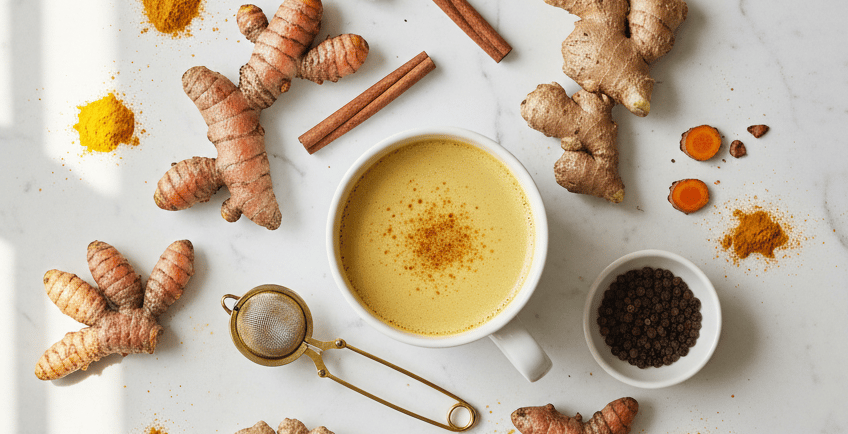Why Turmeric Root Deserves a Spot in Your Daily Wellness Routine
Turmeric root comes from the Curcuma longa plant, a member of the ginger family native to Southeast Asia. While you've probably seen the bright yellow powder in the spice aisle, the fresh root looks similar to ginger—knobby, earthy, and unassuming.
PLANTS
10/26/20252 min read


After incorporating it into my life for the past year, I've become a genuine believer in this golden-hued spice that's been treasured in traditional medicine for thousands of years.
What Makes Turmeric Root Special?
Turmeric root comes from the Curcuma longa plant, a member of the ginger family native to Southeast Asia. While you've probably seen the bright yellow powder in the spice aisle, the fresh root looks similar to ginger—knobby, earthy, and unassuming. But don't let its humble appearance fool you.
The real magic lies in curcumin, the active compound that gives turmeric its distinctive color and most of its health-supporting properties. Research has explored curcumin's potential anti-inflammatory and antioxidant effects, which may explain why this root has been a cornerstone of Ayurvedic and traditional Chinese medicine for centuries.
The Inflammation Connection
Here's something that surprised me: chronic inflammation is linked to numerous health concerns, from joint discomfort to digestive issues. While acute inflammation is your body's natural response to injury, chronic inflammation can overstay its welcome.
Turmeric root has been studied for its potential to support the body's natural inflammatory response. Many people report feeling more comfortable in their joints and experiencing better overall mobility after regular use. My own experience? Less stiffness in the morning and an easier time keeping up with my evening walks.
Beyond the Hype: Real Benefits
What I appreciate most about turmeric root is that it's not a miracle cure—it's a supportive player in a holistic wellness approach. Studies suggest it may:
Support digestive health and comfort
Promote healthy brain function
Contribute to cardiovascular wellness
Assist with maintaining healthy skin
Support the body's natural detoxification processes
The key is consistency. Turmeric root works best when it's part of your regular routine, not just an occasional addition.
How to Use Turmeric Root
Fresh turmeric root can be grated into smoothies, steeped as tea, or added to soups and curries. I love making "golden milk" before bed—warm almond milk with grated turmeric, a pinch of black pepper (which enhances absorption), honey, and cinnamon.
If fresh root isn't available, high-quality turmeric supplements can be an excellent alternative. Look for products that include black pepper extract (piperine) or are formulated with healthy fats to improve bioavailability.
A Word of Caution
While turmeric root is generally safe for most people, it's always wise to consult with a healthcare provider before adding any supplement to your routine, especially if you're taking medications or have existing health conditions. Turmeric can interact with blood thinners and may not be suitable for everyone.
Your Next Step
Ready to explore how turmeric root can support your wellness journey? Whether you're dealing with occasional discomfort, looking to support your overall health, or simply curious about natural wellness solutions, turmeric might be the gentle ally you've been searching for.
Discover more natural health solutions tailored specifically for women at herbalwomenshealth.com. Our expert resources can guide you toward making informed choices about herbs, supplements, and holistic wellness practices that align with your unique needs.
Remember, true wellness is a journey, not a destination. Start where you are, be patient with yourself, and consider adding this ancient root to your modern wellness toolkit.